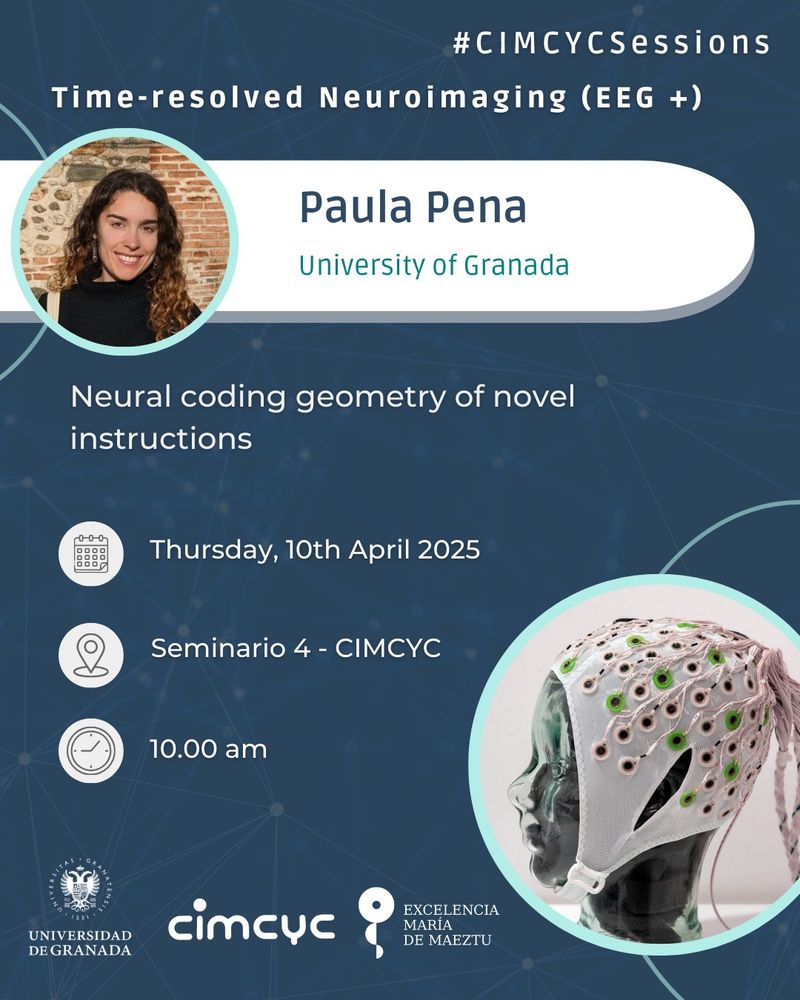Paula Pena
@paulapena.bsky.social
64 followers
120 following
7 posts
PhD student at the Human Neuroscience Lab at @cimcyc.bsky.social | @universidadgranada.bsky.social
Posts
Media
Videos
Starter Packs
Pinned
Paula Pena
@paulapena.bsky.social
· Apr 29

Novel Verbal Instructions Recruit Abstract Neural Patterns of Time-Variable Information Dimensionality
Human performance is endowed by neural representations of information that is relevant for behavior, some of which are also activated in a preparatory fashion to optimize later execution. Most studies...
www.jneurosci.org
Reposted by Paula Pena
Reposted by Paula Pena
Reposted by Paula Pena
Reposted by Paula Pena
David Richter
@davidrichter.bsky.social
· Jun 26
Reposted by Paula Pena
Reposted by Paula Pena
Paula Pena
@paulapena.bsky.social
· Apr 29
Paula Pena
@paulapena.bsky.social
· Apr 29
Paula Pena
@paulapena.bsky.social
· Apr 29

Novel Verbal Instructions Recruit Abstract Neural Patterns of Time-Variable Information Dimensionality
Human performance is endowed by neural representations of information that is relevant for behavior, some of which are also activated in a preparatory fashion to optimize later execution. Most studies...
www.jneurosci.org
Reposted by Paula Pena
Reposted by Paula Pena
PsyArXivBot
@psyarxivbot.bsky.social
· Mar 13












